#museo nacional de arqueologia
Explore tagged Tumblr posts
Text
The Golden Orphism Book, the oldest book in the world.

El Libro del Orfismo de Oro, el libro más antiguo del mundo.
(English / Español / Italiano)
Perhaps the oldest multi-page book in the world, dating from around 660 BC, it was discovered in the Strouma River in Bulgaria. The book is made of six sheets of twenty-four carat gold, each 5x4.5 cm, held together by rings. The Book of Golden Orphism, created over 2500 years ago, contains illustrations of a horse, a mermaid, a harp, soldiers, and text in the Etruscan language. The book was anonymously donated to the National Museum of History in Sofia, where it is currently housed. The authenticity of the book has been confirmed by two experts in Sofia and London, according to the museum's director. The Etruscans were a people originating from Lydia, in what is now Turkey, settling in central Italy about three thousand years ago. Thracian Orphism combined the cult of the Earth and the cult of the Sun, personified by Orpheus and Zalmoxis.
------------------------------------------------------------------------------
Quizás es el libro de varias páginas más antiguo del mundo, datado hacia el 660 a.C, fue descubierto en el río Strouma, en Bulgaria. El libro está hecho de seis láminas de oro de veinticuatro quilates, de 5 x 4,5 cm cada una, unidas por dos anillos. El Libro del Orfismo de Oro, creado hace más de 2500 años, contiene ilustraciones de un caballo, una sirena, un arpa, soldados, y texto en lengua etrusca. El libro fue donado anónimamente al Museo Nacional de Historia de Sofia, donde se encuentra actualmente. La autenticidad del libro ha sido confirmada por dos expertos en Sofía y Londres, según el director del museo. Los etruscos fueron un pueblo originario de Lidia, en lo que es actualmente Turquía, asentándose en la Italia central hace tres mil años aproximadamente. El orfismo tracio combinaba el culto a la Tierra y el culto al Sol, personificado por Orfeo y Zalmoxis.
------------------------------------------------------------------------------
Forse il più antico libro a più pagine del mondo, risalente al 660 a.C. circa, è stato rinvenuto nel fiume Strouma in Bulgaria. Il libro è composto da sei fogli d'oro a ventiquattro carati, de 5 x 4,5 cm ciascuno, tenuti insieme da due anelli.
Il Libro dell'Orfismo d'Oro, creato oltre 2500 anni fa, contiene illustrazioni di un cavallo, una sirena, un'arpa, soldati e testi in lingua etrusca. Il libro è stato donato anonimamente al Museo Nazionale di Storia di Sofia, dove è attualmente conservato.
L'autenticità del libro è stata confermata da due esperti a Sofia e a Londra, secondo il direttore del museo. Gli Etruschi erano un popolo originario della Lidia, nell'attuale Turchia, che si stabilì nell'Italia centrale circa tremila anni fa. L'orfismo tracio combinava il culto della Terra e quello del Sole, personificato da Orfeo e Zalmoxis.
Source: Indika Ki Som. Arqueologia, Historia y Arte
#ancient history#historia antigua#etruscos#etruscans#etruschi#7th century bc#660 bc#s.VII a.C.#The Book of Golden Orphism#Libro dell'Orfismo d'Oro
2 notes
·
View notes
Text
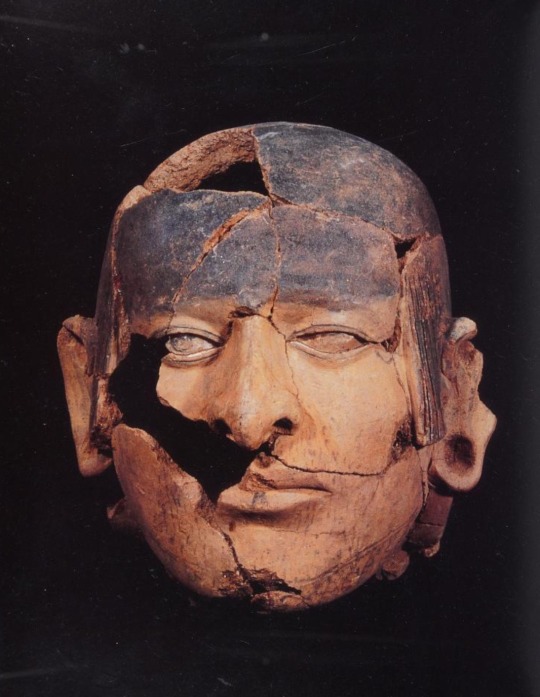
“Fragment of a Moche clay effigy, Plaza 3A, Huaca de la Luna (height: 18 cm)
Museo de Arqueologia, Antropología e Historia, Universidad Nacional de Trujillo”
25 notes
·
View notes
Text
Sabbatical 66/93
Por la mañana comimos unos curros por el centro y luego dimos un paseo hasta Algameca. Algameca Por la tarde dimos un paseo hasta el faro de Navidad (faro “rojo”). Faro de Navidad. Museo Nacional de Arqueologia Maritima Y un poquito de arte para terminar el día: “Stephanie” Rotuladores sobre papel By Julia El Señor Fokof

View On WordPress
0 notes
Text

Estatuilla de madera pintada de Ptah-Sokar-Osiris. Está decorado de forma exuberante en el frente y está dividido en cuatro secciones: un collar usekh de ocho filas con los extremos coronados por cabezas de halcón; un escarabajo alado que empuja el disco solar con los signos udjat y neb en los bordes de sus alas; una foto de Osiris, Isis y Neftis; y un largo texto jeroglífico dividido en tres columnas verticales. La mayor parte del texto se pierde. Hay una clavija debajo de la estatua para su inserción en una base. La clavija para asegurar la corona es todo lo que queda del tocado.
Ubicación actual MUSEO NACIONAL DE ARQUEOLOGIA [46/003] LISBOA
Numero de inventario E 142 (n. Cat. 149)
Citas PERIODO PTOLEMAICO
Sitio arqueológico DESCONOCIDO
Categoría FIGURINA HUMANA
Material MADERA
Técnica Esculpido
Altura 44 cm
Anchura 9,5 cm
0 notes
Photo



A R C H A E O L O G Y // MUSEO NACIONAL DE ARQUEOLOGÍA, MADRID, SPAIN.
#photography#archaeology#sculpture#art#iberian#iberos#history#museum#museo#museo nacional de arqueologia#madrid#spain#inigo de amescua#inigo amescua
8 notes
·
View notes
Photo


Towers and facade of the Neo-Manueline addition to the Jerónimos Monastery in Lisbon, built in 1850. This section of the building is now the home of the Museo Nacional de Arqueología.
#neo-gothic#neo-manueline#architecture#museo nacional de arqueologia#Travel Photography#Lisbon#Portugal
3 notes
·
View notes
Text


Los olmecas son protagonistas de mi nuevo libro La Historia Verdadera de los Hijos del Sol. Ya disponible en papel, pdf y kindle. Enlaces para comprar desde España:
Blanco y negro tapa dura: https://amzn.eu/d/aFIpDW8 Blanco y negro tapa blanda: https://amzn.eu/d/cyPKYoC Color tapa dura: https://amzn.eu/d/0LE0W2Q Color tapa blanda: https://amzn.eu/d/2mY9hVq Kindle: https://amzn.eu/d/cdbCmM1 PDF: https://chicosanchez.com/libros/ols/products/xn--la-historia-verdadera-de-los-hijos-del-sol-de-chico-snchez-bzexn---versin-digital-pdf-rcc
Desde el resto de países os recomiendo hacer una búsqueda en la página de cada país.
Imagen tomada en el Museo Nacional de Antropología de México. Foto: Chico Sanchez
Gracias por compartir.
#olmecas#mexico#chico sanchez#chicosanchez#Museo Nacional de Antropología#fotografía#antropologia#arqueologia
0 notes
Text
Interesante fotografía tomada en 1916 donde podemos identificar a varios personajes frente a la roca del sol Mexica en el Museo Nacional, observamos al Arquitecto Antonio Rivas Mercado (quien fuera director de la Academia de San Carlos), Don Luis Castillo Ledón (quien era director del Museo Nacional en 1916), Lic. Natividad Macías (quien era rector de la Universidad de México en 1916), y finalmente Gral V. Carranza.
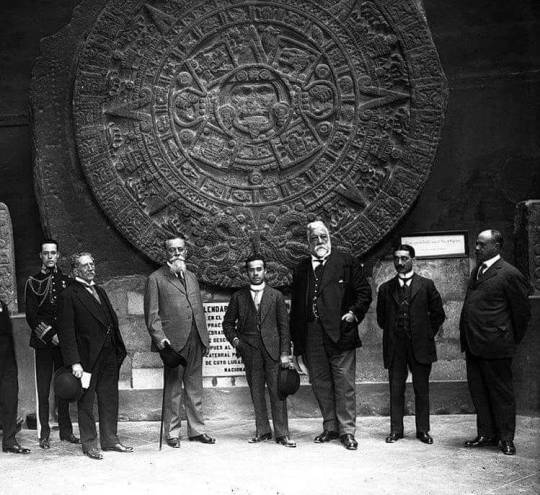
#arqueologia #historia #cultura #mesoamerica #mesoamericanos
56 notes
·
View notes
Photo
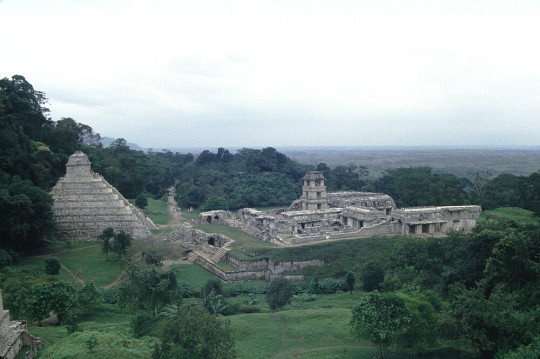
The first stop that Explore Mexico will take is a trip to the Pre-Hispanic City and National Park of Palenque in Chiapas, Mexico. The ancient Mayan city expanded and came to its peak around 400 to 900 AD. It was once ruled by the dynasty of K’inich Janaab ‘Pakal who oversaw the region from 615 to 683 AD. The city had a large presence in the region and ruled with a structured hierarchy typical of other Mayan Societies. The organization consisted of a ruler (K’inich Janaab ‘Pakal was the eleventh of Palenque), nobles, and counselors among the myriad of officials who brought the city to prosperity. Its location in the Yucatan Peninsula, served almost as a geographical gateway to the Mayan empire, providing the setting for long-distance trade. An estimate of its size around 800 AD is believed to be nearly 8,000 people. El Palenque is set in 1780 hectares with an astounding 1,400 buildings have been recorded. To be there in person and look up to these palencano-style buildings is to witness a grand city that once flourished within the Mayan Empire.

Some characteristics of the architecture are unique to the Palenque, the basamentos priamidales were based on the average height of a man. These sections form the base of the temple, the areas which give the pyramid-like structure. The Palenque temples and plazas were constructed of limestone. It was a common stone used to build their structures in the region which was especially plentiful.
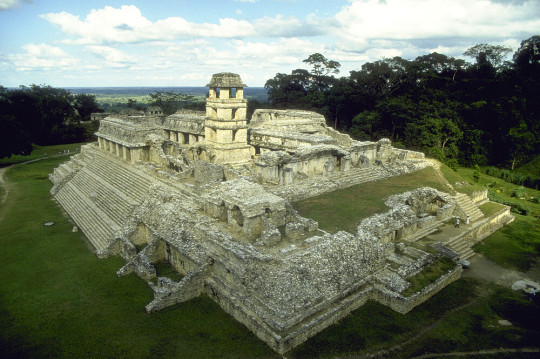
The Palacio or Palace that is pictured above, it is located around the center of the city, it is one of the many sites and temples to visit in the Palenque. There is a temple of La Reina Roja (Red Queen), the temple of La Cruz Foliada ( Foliated Cross), and the temple of La Calavera (The Skull). These are just three of the structures, all of which served a unique purpose and contain inscriptions and depictions singular to the purpose of their construction.
The Palenque’s temples are remarkable for their extensive findings. The tomb of Ixik Tz’aka’ab Ajaw, the ‘Red Queen’ is a notable one. Ixik Tz’aka’ab Ajaw is known as the ‘Red Queen’ due to the dark-red colored mineral found in her tomb. She was the consort of the Ajaw (ruler) Pakal ‘El Grande’. The body of the Red Queen was found adorned with malachite, obsidian, and jade.
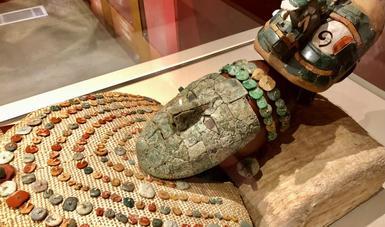

The Palenque was lost amongst the jungle of the Yucatán Peninsula until discovered in 1952 by archeologist Alberto Ruz Lhuillier. In 1987, UNESCO declared the sight an archeological site, and was later declared an archeological monument in 1993 by the Mexican Federal Government. The Palenque is now a protected site and conservation projects are ongoing to maintain this site. It is visited by 600,000 people per year. If I could visit, I would definitely be one of those visitors. It's a place that many should visit, those looking to know more about their culture or to expand their knowledge of Mexican History.
While this blog is exploring the Palenque online, it would be the one I would most like to visit. As seen above, the ancient structures make up a city that focused on expanding and defending the Mayan Empire. The Museum of the Palenque “Alberto Ruz L’Huillier” which first opened in September of 1958 is host to the many artifacts found on site. Some have been returned home, such as the precious stones and artifacts found on the Red Queen. The artifacts and displays give a detailed and unique look into the everyday life of Mayan citizens. It is always better to visit the location in person, to walk the ground the inhabitants did in hundreds of centuries past.
Bibliography:
Stuardo, Rodrigo Liendo and Laura Filloy Nadal. “Arquitectura De Palenque.” Arqueologia Mexicana. Accessed September 2, 2022. www.arqueologiamexicana.mx/mexico-antiguo/arquitectura-de-palenque.
Instituto Nacional De Anthropologia E Historia. Lugares INAH, Museo de Sitio de Palenque “Alberto Ruz L’Huillier”. Accessed September 2, 2022. www.lugares.inah.gob.mx/en/museos-inah/museo/440-museo-de-sitio-de-palenque-alberto-ruz-l-huillier.html.
Instituto Nacional De Anthropologia E Historia. Lugares INAH, Palenque. Accessed September 2, 2022. www.lugares.inah.gob.mx/en/zonas-arqueologicas/zonas/1685-palenque.html.
Instituto Nacional De Anthropologia E Historia. Lugares INAH, Reccorridos. Accessed September 2, 2022. https://www.lugares.inah.gob.mx/en/zonas-arqueologicas/zonas/recorridos/9405-383-recorrido-corto.html
Secretary of Culture of Mexico. Inauguran Pabellón dedicado a la “Reina Roja” de Palenque. March 7, 2021. www.gob.mx/cultura/prensa/inauguran-pabellon-dedicado-a-la-reina-roja-de-palenque.
UNESCO World Heritage Centre. Pre-Hispanic City and National Park of Palenque. Accessed September 2, 2022. https://whc.unesco.org/en/list/411/.
Image Credit List (By Order, First to Last or Top to Bottom):
Geldhof, David. Pre-Hispanic City and National Park of Palenque (Mexico). Gallery of “Pre-Hispanic City and National Park of Palenque”, UNESCO World Heritage Centre. Accessed September 2, 2022. whc.unesco.org/en/documents/109481,
Cowrie, Christa. Templo del Sol. Palenque, Chiapas. Accessed September 2, 2022. www.arqueologiamexicana.mx/mexico-antiguo/arquitectura-de-palenque
Gray, Martin. Panoramic View. Gallery of “Pre-Hispanic City and National Park of Palenque”, UNESCO World Heritage Centre. Accessed September 2, 2022. whc.unesco.org/en/documents/109469.
Instituto Nacional De Anthropologia E Historia. Secretary of Culture of Mexico. March 7, 2021. www.gob.mx/cultura/prensa/inauguran-pabellon-dedicado-a-la-reina-roja-de-palenque.
Gray, Martin. Pre-Hispanic City and National Park of Palenque (Mexico). Gallery of “Pre-Hispanic City and National Park of Palenque”, UNESCO World Heritage Centre. Accessed September 2, 2022. whc.unesco.org/en/documents/109465.
3 notes
·
View notes
Photo

💪🏿Una señora con carácter 🧕🏻La Dama de Baza es una escultura íbera del siglo IV a. C. 🎨 Labrada en piedra caliza policromada por los bastetanos. ��Se expone en el @manarqueologico . . . . #museoarqueologiconacional #damadebaza #ibero #esculturaibera #madrid #arqueologia #escultura #protohistory #protohistoria #scuplture # (en Museo Arqueológico Nacional de España) https://www.instagram.com/p/CcntiVKIHip/?igshid=NGJjMDIxMWI=
#museoarqueologiconacional#damadebaza#ibero#esculturaibera#madrid#arqueologia#escultura#protohistory#protohistoria#scuplture
7 notes
·
View notes
Photo

Mantle, 0-100 C.E., Brooklyn Museum: Arts of the Americas
Size: adult; probable wearer: male. Plain weave with horizontal camelid fiber warp, camelid fiber weft and camelid fiber embroidery. The mantle has a crimson ground with a pattern of large bird-like figures with outstretched wings repeated over the entire textile. Each corner has a black (purple) square border with fringe and one-faced crossed looping, and is embroidered using one-faced stem-stitch curvilinear embroidery to create a single bird figure. Green, yellow, blue, purple, white, khaki and pink colors are used for the figures on the borders and in the field (NK). There are four variants of the figures represented with a fifth figure type in one of the border sections. From Mary Frame's notes: The mantle does not appear to have had long borders; however, the fringe band may have originally extended across the long sides as it is cut at the relevant 4 interior points of the border squares. It is possible that the long borders were removed, or never attached. Two of the 34 bird figures in the field of the mantle are unfinished and lack hand-held ornaments, one of the figures holds only one ornament and the remaining 31 each hold two ornaments. The figure's body is bilaterally symmetrical; it is only the differing hand-held objects that make it asymmetrical. The rows and columns are arranged in translational symmetry and therefore rotational symmetry between the rows and columns. The lower right corner border contains an aberrant color block image. This figure type combines human attributes (arms and head) with the body of a bird (likely a falcon from the tail markings) shown in flight with its wings outstretched, representing the mythical transformation from human to bird. A snake-like protuberance extends from the mouth and two trophy head-like figures appear at either side of the snake. Two snakes adorn the bird's back. In the Museo Nacional de Antropologia y Arqueologia, Lima, Peru, bundle 310 contains a ponchito (41) with similar figures. This figure was called a "goat sucker" by Junius Bird, but Mary Frame refers to it as one stage in the mythical transformation from human to falcon. The mantle format, with corner blocks but no borders on the long sides, is not among the types diagrammed by Carrion-Cachet, 1931, figs. 14 and 15. It remains a possibility that its borders were carefully removed, or never attached. Two mantles in the Boston Museum of Fine Art (16.31 and 16.33) are in the same state. Size: 104 3/4 x 38 3/16 in. (266.1 x 97 cm) Medium: Camelid fiber
https://www.brooklynmuseum.org/opencollection/objects/38936
6 notes
·
View notes
Text
THE LAST MEAL OF "THE TOLLUND MAN" - DENMARK
LA ULTIMA COMIDA DE "EL HOMBRE DE TOLLUND" - DINAMARCA

(english / Español)
Known as "Tollund Man", this individual, who lived about 2,400 years ago, is magnificently preserved, with his facial features showing a surprisingly serene and perfectly preserved appearance. When the Tollund man was discovered 70 years ago, researchers examined his well-preserved stomach and intestinal tract and determined that this middle-aged man had consumed his last meal 12 to 24 hours before his death.
Researchers at the National Museum of Denmark have studied the contents of the stomach and intestines of Tollund Man using the most modern methods of analysis.
"We have been able to reconstruct the last meal of the Tollund man to such a high degree of detail that we can almost reproduce the recipe," says Nina H. Nielsen, a researcher at the National Museum of Denmark. She is referring to the mummy of a man, aged about 30, which was found in 1950 in a peat bog in the village of Tollund, near Silkeborg on the Jutland peninsula.
The new analysis has allowed researchers to determine the percentages of these elements: 85% barley, 9% persicaria and 5% flax. In its stomach, traces of threshing and animal fat (possibly fish) have been documented for the first time. "Nutritionally, the food was quite good, also when you look at the distribution of fats, proteins and carbohydrates," says researcher Peter Steen Henriksen.
Another new finding of the recent study is that Tollund man suffered from a number of parasitic infections, including tapeworm, possibly as a result of eating raw or undercooked meat and contaminated water. During the study of the Tollund man's intestinal contents, the researchers also discovered the existence of whipworm eggs and stomach worms, a reflection of poor hygiene in Iron Age communities.
*****
Conocido como "El hombre de Tollund", este individuo, vivió hace unos 2.400 años, está magníficamente conservado ya que se observan a la perfección sus rasgos faciales, que sorprenden por la gran serenidad que denotan. Cuando descubrieron al hombre de Tollund hace 70 años, los investigadores examinaron su estómago bien y su tracto intestinal bien preservados y determinaron que este hombre de mediana edad había consumido su última comida de 12 a 24 horas antes de su muerte.
Investigadores del Museo Nacional de Dinamarca han estudiado con los más modernos métodos de análisis el contenido del estómago y los intestinos del hombre de Tollund.
"Hemos podido reconstruir la última comida del hombre de Tollund con un grado de detalle tan alto que casi podemos reproducir la receta", afirma Nina H. Nielsen, investigadora del Museo Nacional de Dinamarca. La científica se refiere a la momia de un hombre, de unos 30 años, que apareció en 1950 en una turbera en la localidad de Tollund, cerca de Silkeborg, en la península de Jutlandia.
El nuevo análisis ha permitido a los investigadores conocer los porcentajes de estos elementos: un 85% de cebada, un 9% de persicaria y un 5% de lino. En su estómago se han documentado por primera vez restos de trilla y de grasa animal (posiblemente pescado). "Nutricionalmente, la comida era bastante buena, también cuando se observa la distribución de grasas, proteínas y carbohidratos", comenta el investigador Peter Steen Henriksen.
Otra novedad que ha aportado el reciente estudio es conocer que el hombre de Tollund sufría varias infecciones parasitarias, entre ellas la tenia, posiblemente por haber consumido carne cruda o poco cocinada y agua contaminada. Durante el estudio del contenido intestinal del hombre de Tollund, los investigadores también descubrieron la existencia de huevos de tricocéfalos y de gusanos de estómago, un reflejo de la deficiente higiene en las comunidades de la Edad del Hierro.
Fuente: Indika Ki Som. Arqueologia, Historia y Arte
1 note
·
View note
Text

“Bottom and side view of a bowl from the Early Shakimu component at UCA 34. Jose's Hill. The excised design was covered with a thick, highly burnished, dark red slip. Collection of the Museo Nacional de Antropología y Arqueologia, Pueblo Libre, Lima, Peru. Diameter 18 cm.”
From: “the upper Amazon” by Lathrap, Donald Ward; 1970.
2 notes
·
View notes
Photo
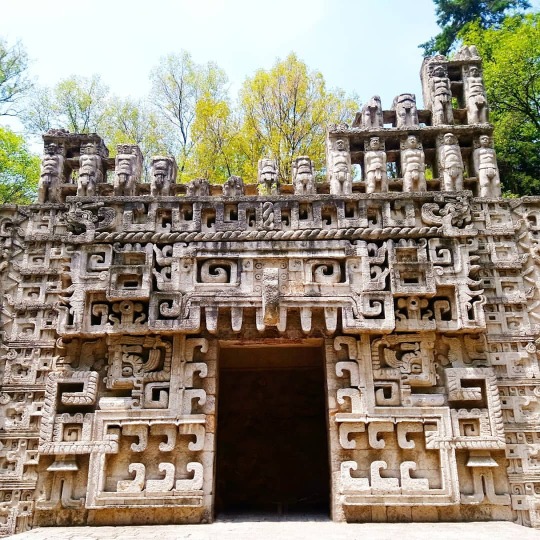
Un pedacito de Chiapas en la CDMX 🍃🌿🏞️💖🇲🇽 Cada vez que puedan descubran su ciudad, estoy seguro que encontrarán algo muy especial en ella 😊 . . . . . #viajar #travel #travelgram #travelblogger #traveler #traveller #instatraveller #travelphotographer #picoftheday #photooftheday #mexico #travelphotography #viaje #visitmexico #instagood #travelling #instagram #cdmx #ciudaddemexico #mexicocity #arqueologia #aztecas #history #historia #museo #museum #メキシコ #chiapas #yaxchilan (en Museo Nacional de Antropologia E Historia) https://www.instagram.com/p/CBEaEVhpDWG/?igshid=9m3rh99607wz
#viajar#travel#travelgram#travelblogger#traveler#traveller#instatraveller#travelphotographer#picoftheday#photooftheday#mexico#travelphotography#viaje#visitmexico#instagood#travelling#instagram#cdmx#ciudaddemexico#mexicocity#arqueologia#aztecas#history#historia#museo#museum#メキシコ#chiapas#yaxchilan
23 notes
·
View notes
Photo

The old and the new blended together 📍Museo Arqueológico Nacional . . . . #museum #art #history #photography #architecture #exhibition #gallery #museo #arte #artwork #culture #artgallery #sculpture #travelphotography #museums #artmuseum #archeology #archeologia #history #archaeology #ancient #art #museum #archeologie #arqueologia #archaeologicalsite #archeologylovers #archeologicalsite #man #ancienthistory (en Museo Arqueológico Nacional de España) https://www.instagram.com/p/B9RM5oxqsn8/?igshid=1ezmmblbao7wc
#museum#art#history#photography#architecture#exhibition#gallery#museo#arte#artwork#culture#artgallery#sculpture#travelphotography#museums#artmuseum#archeology#archeologia#archaeology#ancient#archeologie#arqueologia#archaeologicalsite#archeologylovers#archeologicalsite#man#ancienthistory
1 note
·
View note
Photo

Magnificent stone throne of a #mayan king #masterpiece #amomentintime #antiquities #royalportraits #stonecarving #pricelesstreasures #connectingtotheinfinite @josephbrooksjewelry (at Museo Nacional De Arqueologia Y Etnologia Zona 13) https://www.instagram.com/p/B63RNB5Jc70/?igshid=8ybjpc2nglxr
#mayan#masterpiece#amomentintime#antiquities#royalportraits#stonecarving#pricelesstreasures#connectingtotheinfinite
1 note
·
View note